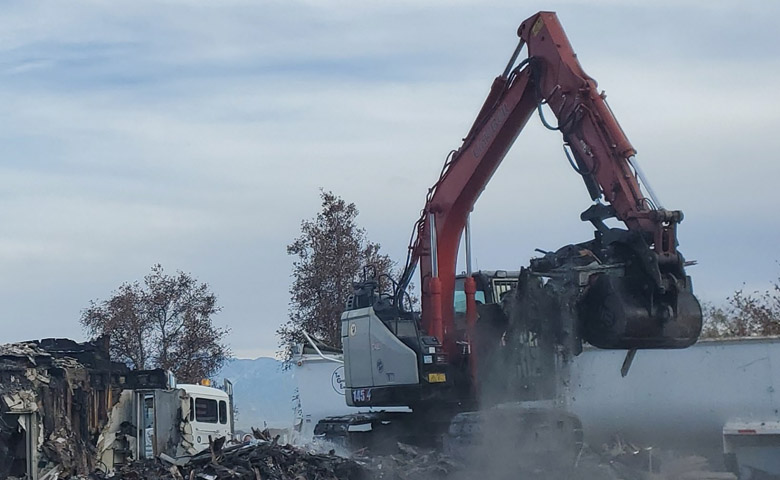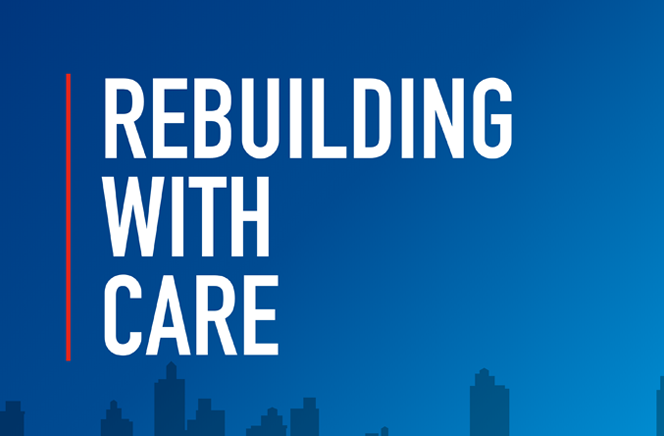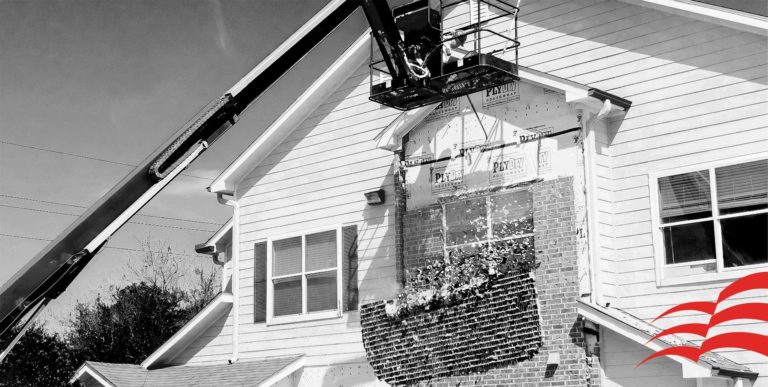
Demolition is a vital part of making sure services like reconstruction and catastrophe recovery are rendered efficiently. As a full-service, nationwide disaster recovery firm, ATI has demolition teams ready to provide safe, efficient demolition services in response to a disaster or for a planned demolition and reconstruction project. This newsletter will give a brief overview of the complexities of demolition, including the developing technology in demolition robotics and how to manage the environmental impact of the debris produced by demolition.
Overview
There are several ways to approach a demolition project, and every site can pose unique challenges depending on the reasons for the demolition, the site constraints, and the goals of the demolition project.
Common types of demolition include: Dismantling; Total; Selective; Interior Demolition for Renovation; Structural; “Surgical” or Precision; and Industrial. Each type is geared to meet the specific needs of the site or the project and can involve different tools and methods, such as controlled collapse; a building “trip”; floor-by-floor; and high reach. For more information on the specifics of the basics of demolition, see our demolition whitepaper linked below.

The most important item for making sure your demolition project goes smoothly, whether it’s a planned demolition or a disaster recovery demolition, is to provide the engineers on your demolition team with the “as-built” documents. These are blueprints that show the details of how the building in question was actually constructed, including information about load-bearing supports within the building, mechanical, electrical, and plumbing (MEP) information, and other details.
In a planned demolition, the details in the as-built documents are crucial to ensuring MEP considerations are addressed correctly. This often requires being in contact with the local jurisdictions for proper licensing and disconnections to ensure the safety of the site. It can also impact neighboring buildings and structures, and proper coordination with these outside entities can be time consuming, and timeline derailing, if not made part of the planning process.
Providing as-built documents, and having digital or back-up physical versions of them available, is also vital in a disaster recovery situation. It allows demolition engineers to calculate which areas of the building are at or over their weight capacity due to damage. Knowing this quickly can give disaster recovery teams the ability to salvage more of a damaged building by properly shoring up repairable areas of the structure, preventing further damage. Knowing where MEP lines are, and where items like sewer connections are, is also crucial to managing a safe demolition site.
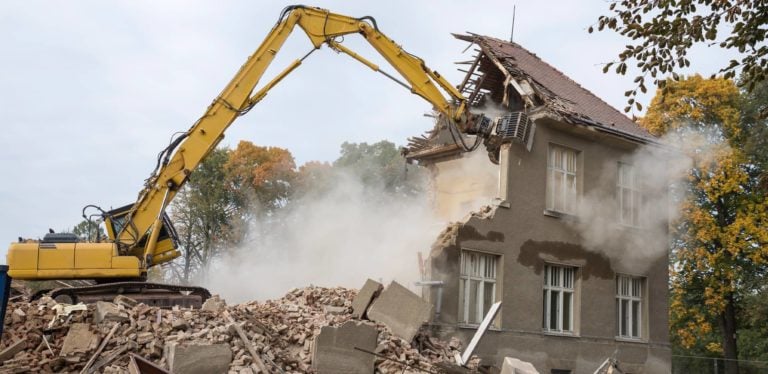
Robotics in Demolition
Classic tools of demolition all require training, some of it quite intense. A prime example is the training required for the use of explosives, which typically necessitates a trained and certified engineer to be in charge of their use, and is usually under federal oversight. Licensing for operating demolition machinery and the safety certifications required can vary state to state and can also be under federal jurisdiction. Cranes, large excavators, skid loaders and skid steers, and unique attachments for more common machinery are standard for demolition work.
These standard machines of demolition are often bulky and heavy. There are precision work situations required in many demolition projects, which sometimes makes customary machinery unsuitable. A classic example is in a structure where the load bearing capacity can’t support the weight of the machines, and there is no easy access from outside to demolish the area needed. These situations are also often unsafe for human workers, limiting the ability to preserve structures for reconstruction. In these types of instances, rather than writing off a building as a loss that needs to be completely destroyed instead of selectively demolished, a modern solution can be implemented: demolition robots.

Robots and the use of robotic machinery and tools in demolition are an up-and-coming development for the construction, demolition, and disaster recovery industry. The ability to send in a human-controlled demolition robot keeps workers safe and allows for more versatility on the demolition site. In an instance where heavy machinery would be dangerous to use in a damaged structure that can’t support its weight, or the operator in the cab would be in danger, a demolition robot can be utilized to get the job done. The training for operating these robots is often easy for workers to master. The controls are similar to modern video game controls, with joysticks and displays, featuring more sophisticated options appropriate for the complex machinery they control.
While demolition robotics have been in use internationally in various forms since the 1970s, and in the U.S. since the 1980s, the advancements of modern technology have allowed for stronger robots, better remote control capabilities, and a wider range of size, strength, and maneuverability options. Most demolition robots have interchangeable arms that allow for drilling, crushing, breaking, scooping and carrying, and hammering work to be done. They can range from small enough to fit through standard doorways up to more significant sizes for heavier work. Some robotics are also attachments for classic machinery like boom arms, allowing for more delicate work to be achieved through human remote control in hard-to-reach areas. Diesel and electric motor options tend to be available, depending on the manufacturer and model. Robots don’t come cheaply – most individual demolition robots cost $100,000 or more but quickly provide a return on investment by saving time and providing safety for human workers in a demolition firm.
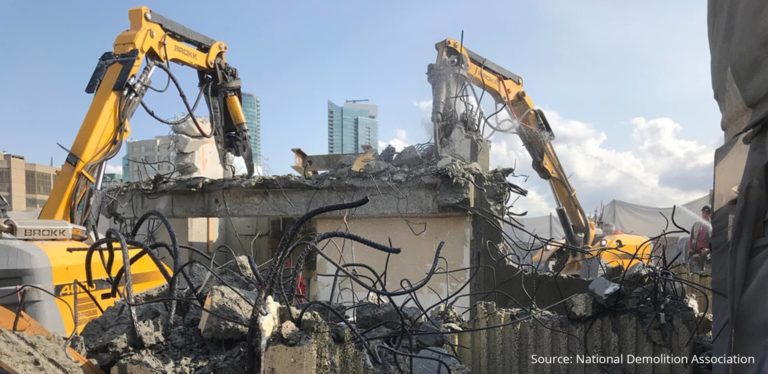
One of the most familiar robotic tools, with a variety of uses both in and out of the field of demolition, are drones. Drones often help with disaster recovery tasks like imaging, delivering supplies, and other tasks suitable for lightweight and highly maneuverable machines. ATI already utilizes drone technology outside of demolition services that can easily translate to demolition projects as well. Providing a birds-eye view of job sites, materials, machinery, and people, drones can gather more data more quickly and accurately than a surveyor on foot.
Industrial demolition may involve work at contaminated and polluted sites, and those are some of the best arenas for utilizing demolition robotics of any kind. These polluted sites are commonly called brownfield or superfund sites, depending on the level of contamination and the size of the area affected. Drones can be a valuable tool for assessing these areas that may be too hazardous to send a worker in person, and demolition robots may be appropriate for conducting the heavier demolition work in areas deemed too hazardous for humans. In situations involving hazards like chemical spills at a work site, drones can also be sent in to assess the damage and to help with planning mitigation efforts. A recent example of situations where robotics supplemented human work on demolition in hazardous environments is the disaster recovery efforts after a chemical plant explosion in northern Illinois in June 2021.

Environmental Impact
Demolition creates a lot of debris and is often in response to a disaster that has also generated both damage and debris of its own. Where does it all go after it leaves a demolition site? Ideally, it gets recycled or otherwise disposed of in environmentally sustainable ways.
Environmental concerns are becoming more and more crucial for acquiring certifications like Leadership in Energy and Environmental Design (LEED) and making “green” choices in the construction, demolition, and disaster recovery industries. Often, these green choices are mandated by regulatory bodies such as the Environmental Protection Agency and legislation like the Clean Water Act. Controlling debris and any pollutants and environmental hazards that may result from a demolition job is a necessary part of the plan for all demolition projects.
Here are five statistics that show the impact of demolition debris and the industry around it (Source: Rubicon Technologies)
- In 2015, green design projects in a commercial setting generated $1.14 billion in revenue.
- 28,000 jobs are projected to be a direct result of the recycling industry, specifically for construction and demolition (C&D) debris recycling.
- In just one year, C&D debris accounted for more than twice the amount of generated municipal solid waste in the U.S. – an estimated 230-530 million tons, per the EPA.
- More than 90% of C&D debris comes from demolition projects, while new construction accounts for less than 10%.
- Concrete, identified by the EPA as one of the most potent sources of pollution for bodies of water in the U.S., accounted for 23.1 million tons of waste during construction and a total of 358.7 million tons of demolition debris in 2015.
By keeping environmental considerations a high priority within demolition and debris management, demolition firms can often save money and make more appealing bids on demolition projects by factoring in the recouped costs associated with scrapping materials like steel, copper, and other materials with value. It can also lower costs to utilize appropriate rubble for backfill on-site where needed, saving on shipping heavy materials like concrete off-site to be disposed of appropriately.

Conclusion
Demolition is an evolving, expanding field requiring more expertise than might be assumed, with strong considerations needed to protect the environment and human life. Sophisticated technology, partnered with traditional human labor and ingenuity, has allowed demolition to advance in its capabilities. With these exciting developments shaping the demolition industry, responsible disaster recovery firms like ATI are keeping up with the requirements of environmental considerations and implementing new technologies where possible.
